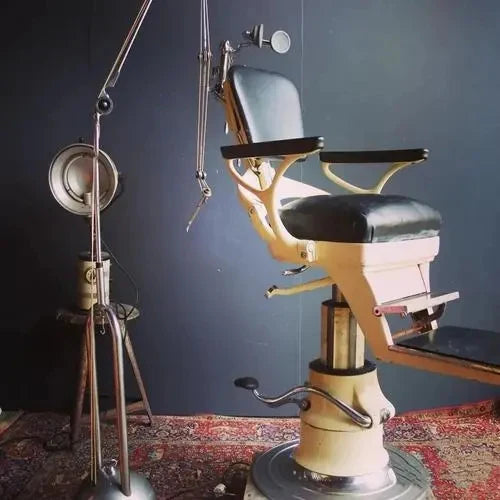
Dentists need to maintain a fixed posture for a long time when treating patients, which often leads to common occupational diseases among dental practitioners, such as chronic pain in the shoulder, neck, and lumbar spine. Integrating more principles of ergonomics into the design of dental chairs to alleviate the pressure and fatigue of dentists to the greatest extent is a common expectation of dentists around the world, and it is also a persistent pursuit of dental chair manufacturing enterprises. Throughout the important milestones in the development history of dental chairs, most of the improvements and inventions of dental chairs did not come from inventors, but from dentists who hoped to improve their work environment by improving the engineering design of dental chairs.

The invention history of dental treatment chairs can be traced back to the 18th century. In 1790, Dr. Josiah Flagg, an American dentist, modified a Windsor writing chair into a dental chair with a padded pillow and a tray on the side for placing treatment instruments; In 1832, London dentist James Snell designed the first lounge chair dental chair; In 1877, American dentist Basil Manly Wilkerson invented the first hydraulic dental chair, which could better stabilize the patient's back; In 1940, Ritter invented a dental chair with standard air pressure, a spittoon, and X-ray equipment, achieving the most significant innovation in the history of dental chair development. Nearly twenty years later, the famous dentist Dr. Naughton invented a chair with a backrest that could be adjusted to a reclining position in 1957, officially marking the emergence of modern dental chairs. Until today, the dental industry is still using Dr. Naughton's dental chair design scheme, and based on this, more consideration is given to the comfort of dentists and patients. For this reason, more and more ergonomic concepts and humanized operating procedures have been incorporated into the design of dental chairs, which can set different treatment positions (upper and lower palatal teeth and rescue positions) and can be stored in a programmed manner. The control part of the dental chair has evolved from initial mechanical and electric control to advanced control such as air valve control and electromagnetic valve control. In addition, mid to high end dental chairs are often equipped with multifunctional foot control devices. Dentists can use their feet to control and adjust the treatment process as needed, without stopping the operation of the equipment to achieve the switch action of water and air guns.

With the vision of making dentists work more easily and patients receive more comfortable medical treatment, the Tuojian Dental Treatment Chair integrates the principles and methods of intelligent ergonomics into the design of various products. It is equipped with a dual joint headrest and a reliable hydraulic lifting system, ensuring that patients maintain a comfortable feeling while the chair is in motion. The ergonomic design of the base allows dentists to bring their seats closer to the patient, allowing for better access to the patient's mouth. The innovative comfortable hydraulic lifting system makes starting and stopping smoother, further enhancing the patient's comfort experience.

The Tuojian Dental Treatment Chair, Dental Chair, and Assistant Chair all support personalized leather pad color customization. In addition, dentists can integrate the Tuojian Dental Treatment Chair with operating room accessories such as the treatment table, oral lamp, display base, High Power Attraction Device (HVE) auxiliary hanger, and dental handheld machine according to their own needs, creating a warm and efficient consultation room.


1 comment
wow~